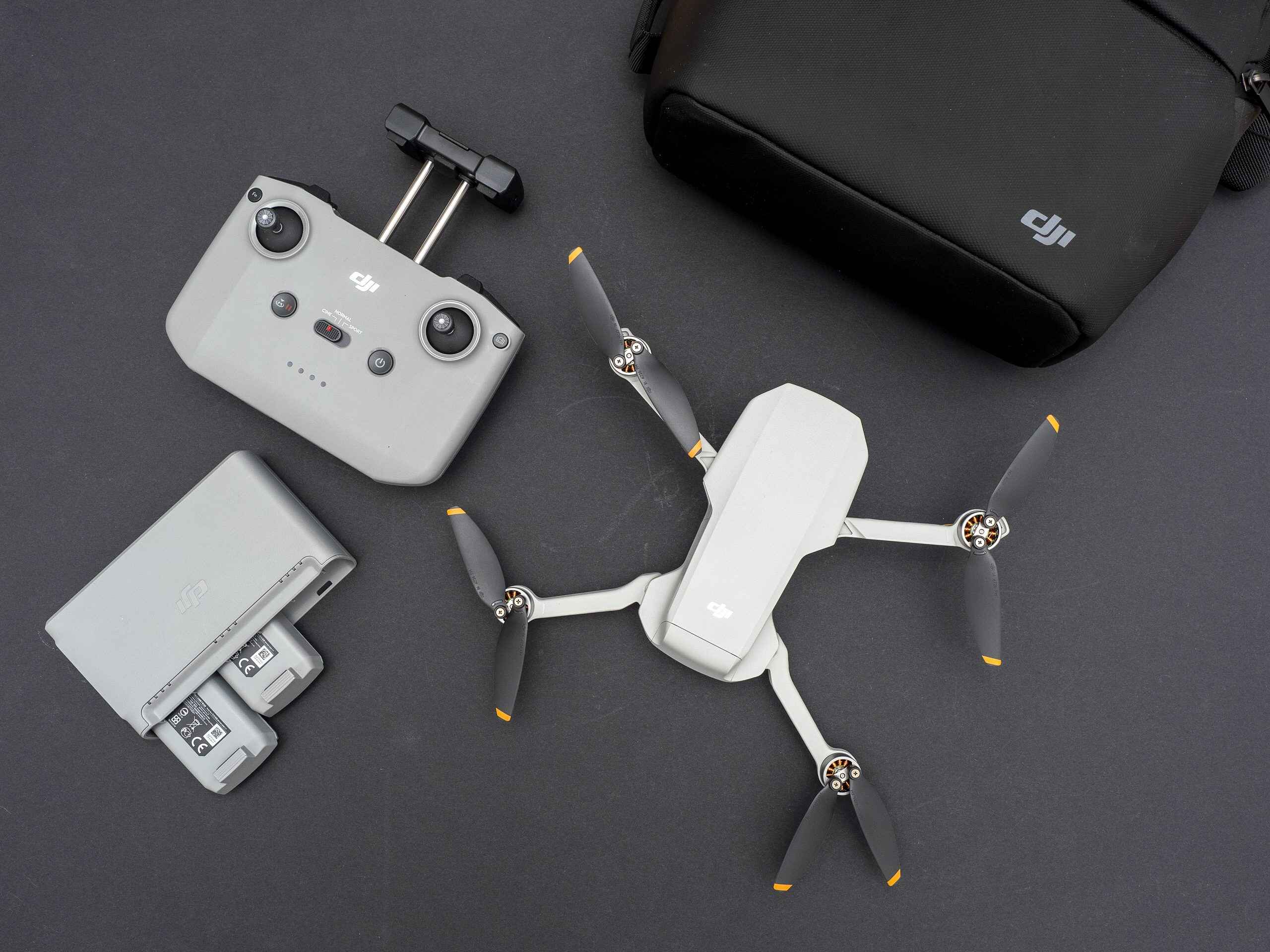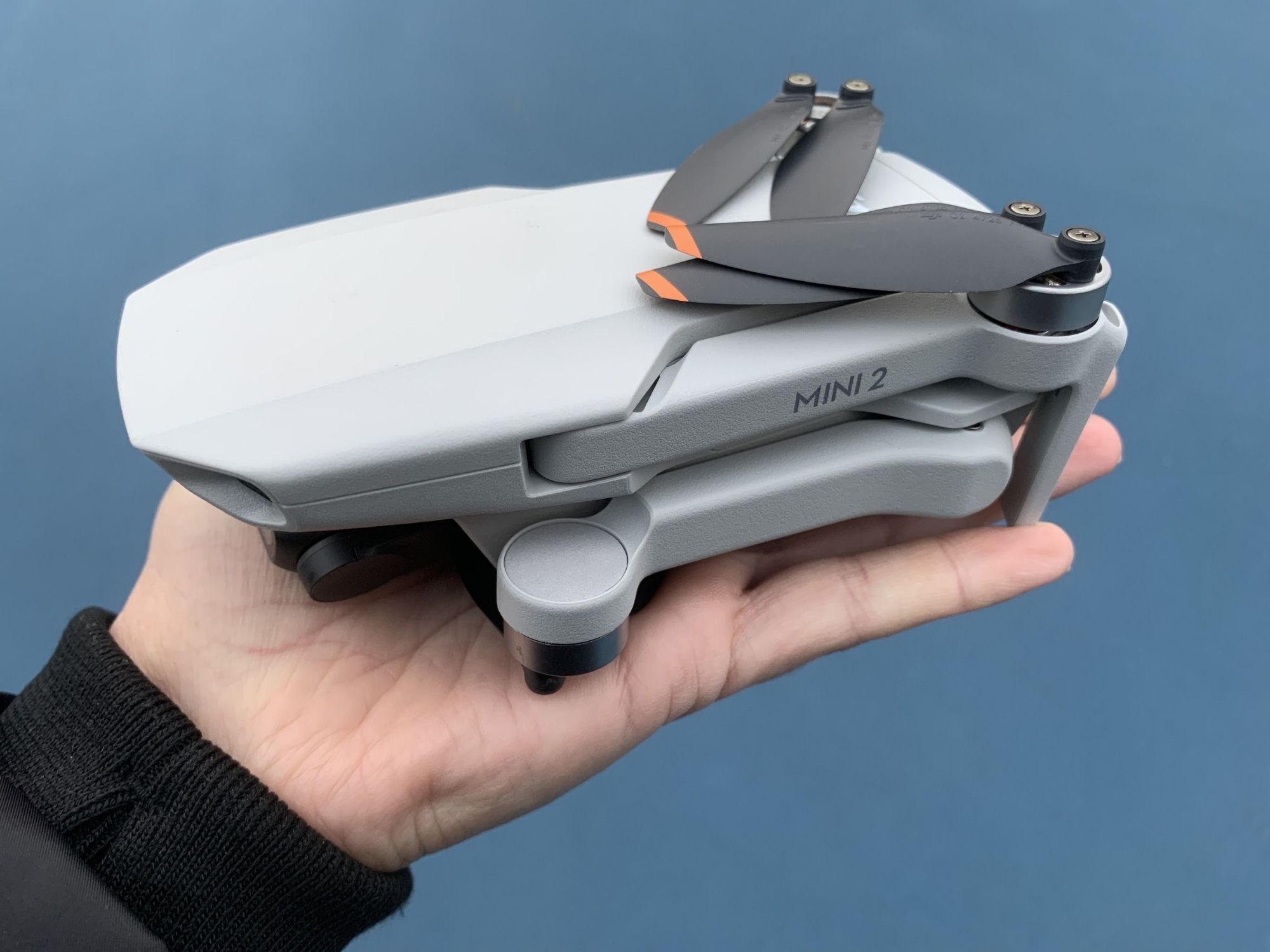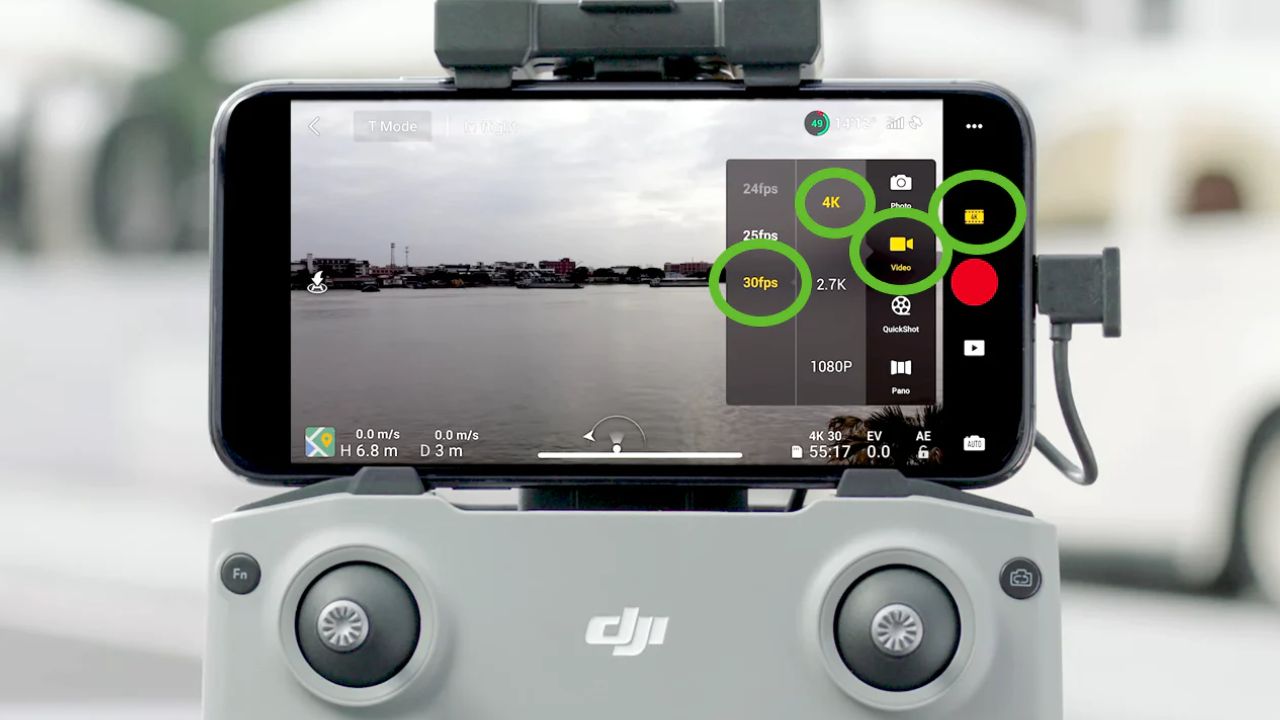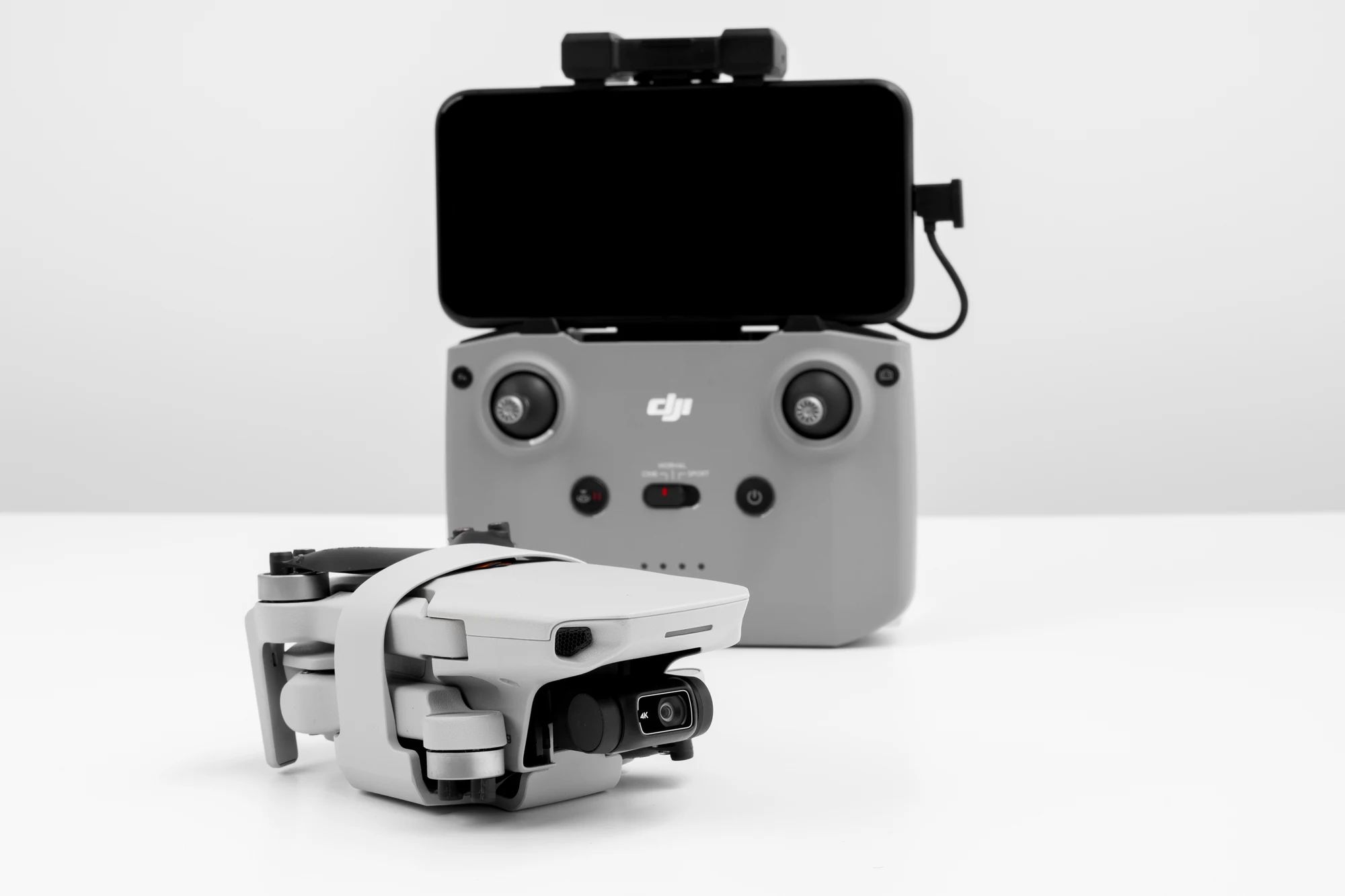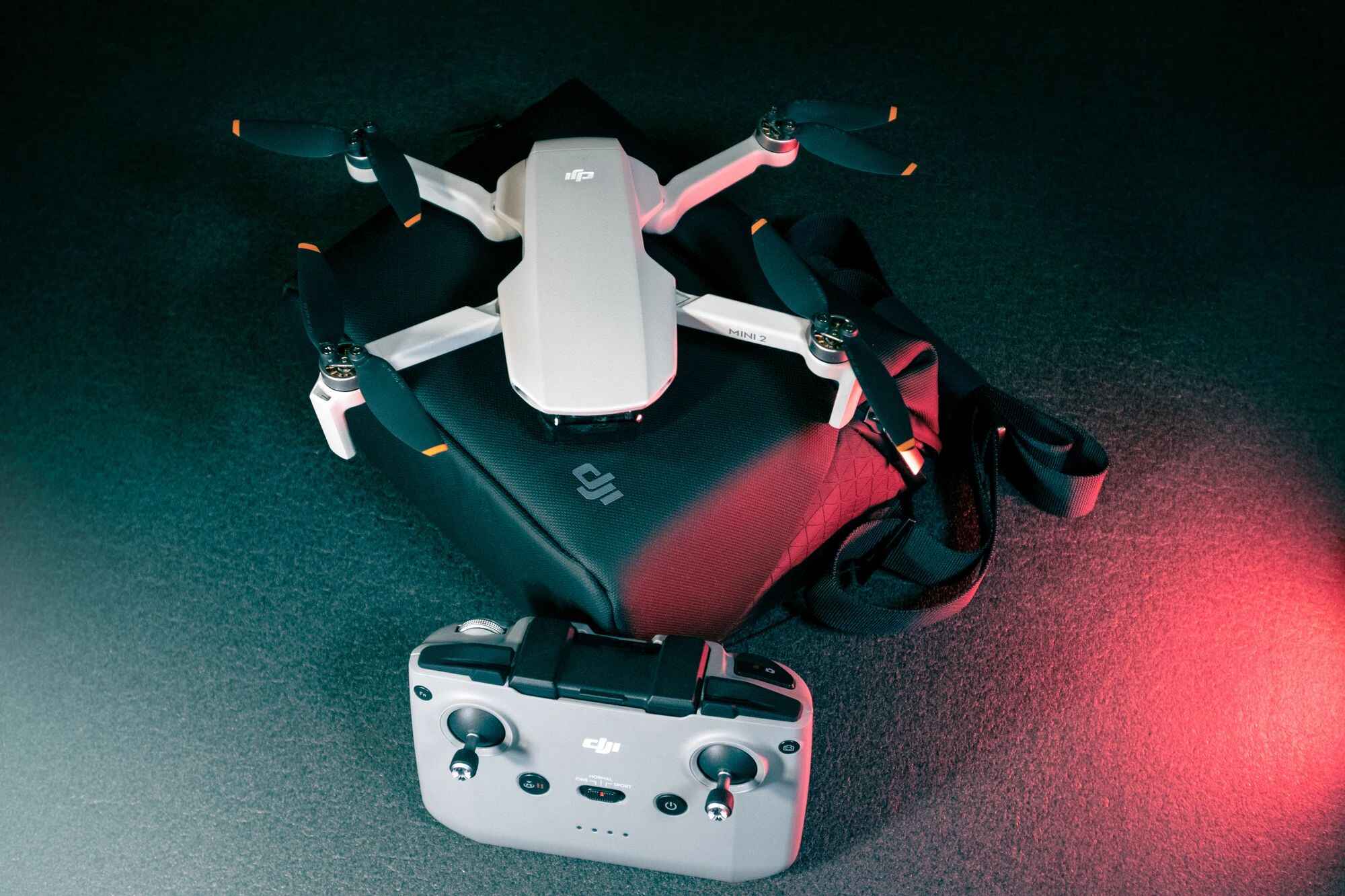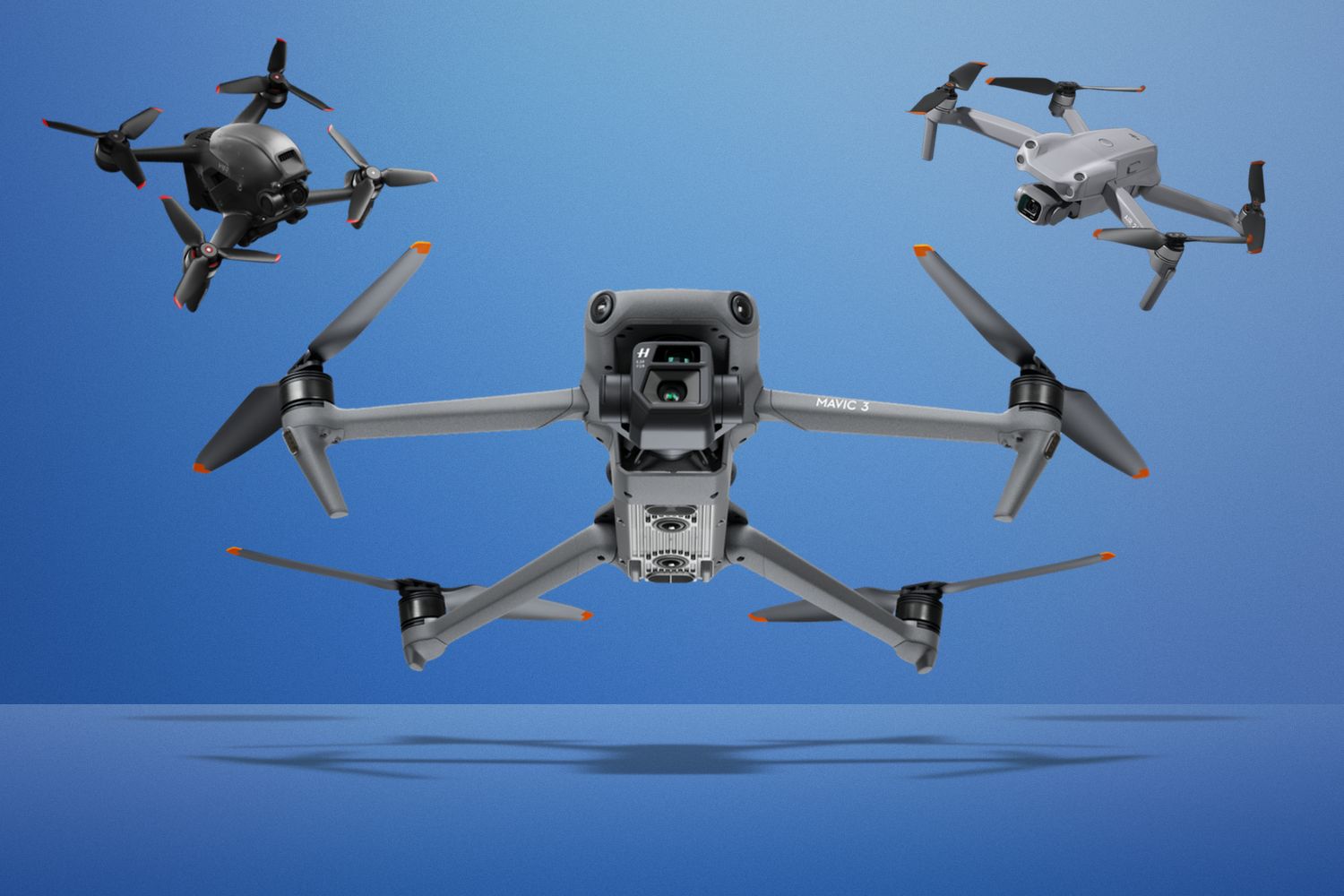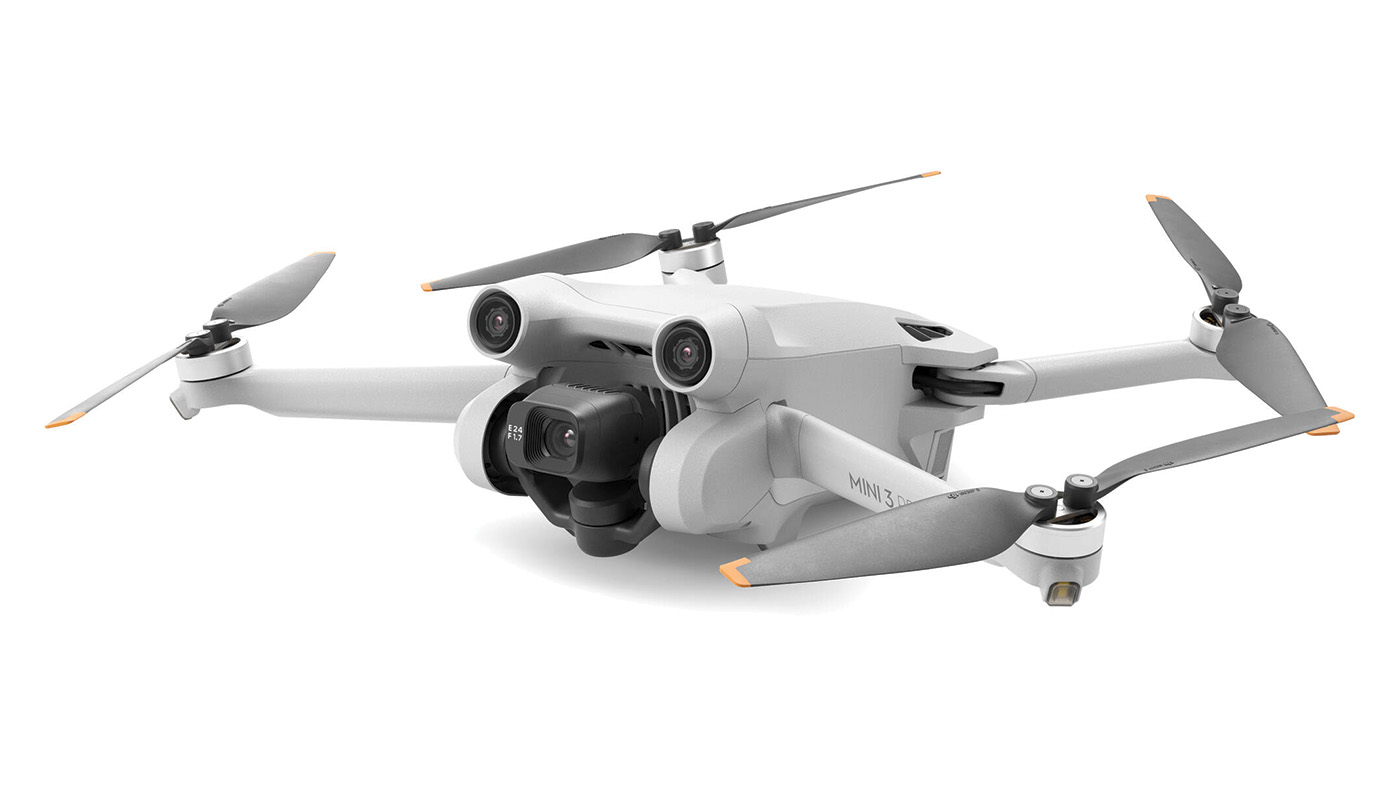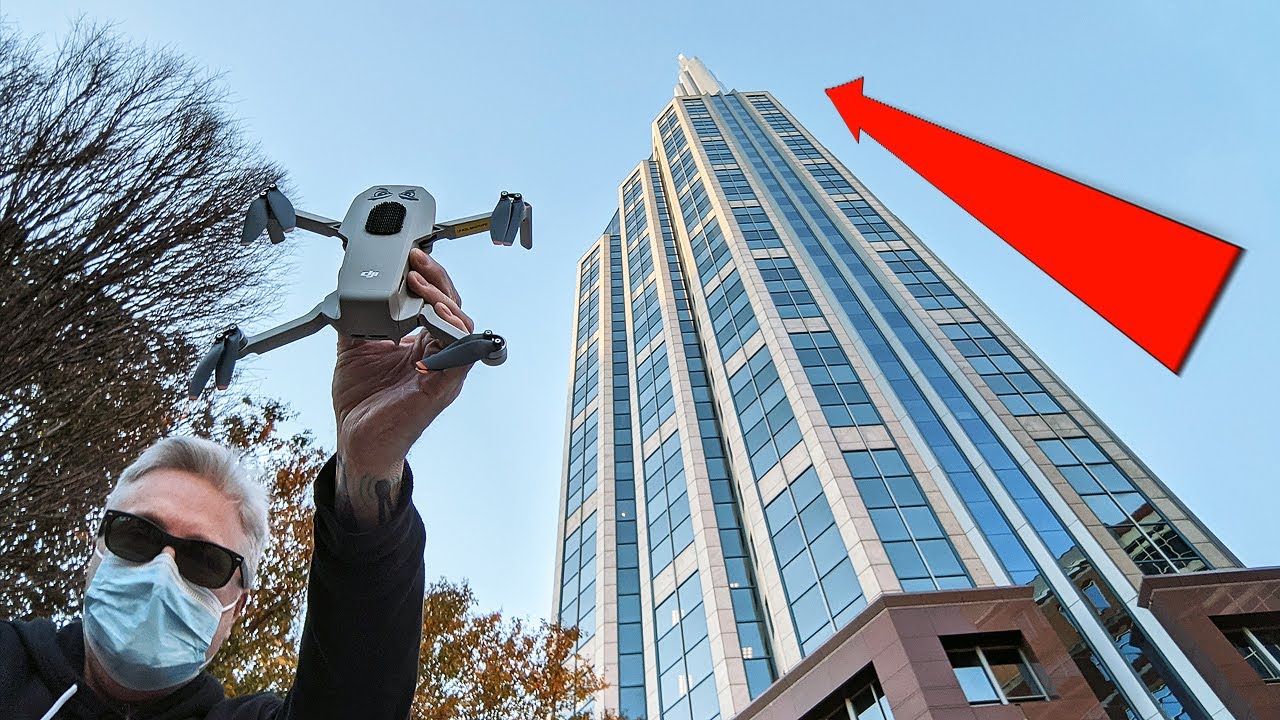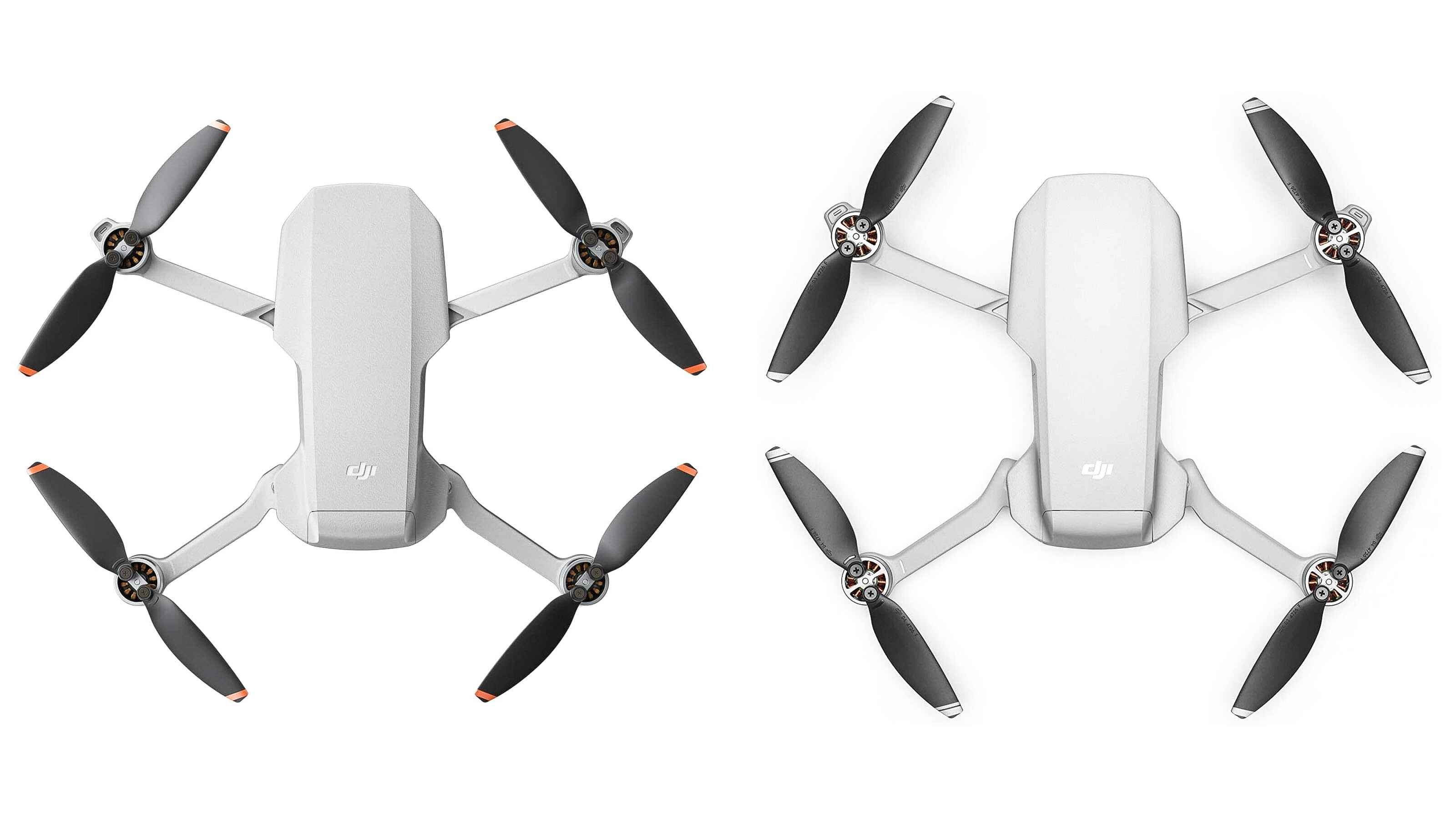Introduction
When it comes to aerial photography and videography, the DJI Mini 2 is a popular choice among beginners and hobbyists. This compact and lightweight drone packs impressive features, allowing users to capture stunning shots from above. While the quality of the camera and the stability of the gimbal are crucial factors, speed is another aspect to consider. In this article, we will delve into the speed capabilities of the DJI Mini 2 and explore why it matters.
The DJI Mini 2 is designed to be agile and nimble, providing users with an enjoyable flying experience. Understanding its speed specifications and the factors that influence its performance will help you make the most of this incredible drone. Whether you’re interested in capturing fast-paced action shots or simply want to explore the capabilities of your DJI Mini 2, this article will provide you with the insights you need.
Throughout this article, we will also discuss the various flight modes and safety considerations that come into play when flying at high speeds. By the end, you’ll have a comprehensive understanding of how fast the DJI Mini 2 can fly and how to maximize its speed while ensuring the safety of your drone and those around you.
DJI Mini 2: An Overview
The DJI Mini 2 is a compact and lightweight drone that has captured the attention of drone enthusiasts worldwide. Weighing in at just 249 grams, it falls under the FAA’s weight limit for mandatory registration, making it both convenient and hassle-free for users. Despite its small size, the Mini 2 is packed with advanced features and capabilities.
Equipped with a 12-megapixel camera capable of capturing stunning aerial photos and shooting 4K videos at 30 frames per second, the Mini 2 ensures high-quality imagery. The three-axis motorized gimbal provides stability, allowing for smooth footage even in windy conditions. With a maximum transmission distance of 10 kilometers, you can easily explore vast landscapes and capture breathtaking shots from a distance.
One of the standout features of the Mini 2 is its flight time. With up to 31 minutes of flight time on a single charge, you can soar through the sky and cover a significant area without worrying about battery life. The Mini 2 also benefits from DJI’s reliable OcuSync 2.0 transmission technology, which delivers a stable and uninterrupted connection between the drone and the remote controller.
Controlling the DJI Mini 2 is incredibly intuitive, thanks to the DJI Fly app. This user-friendly mobile application allows you to access various intelligent flight modes, such as QuickShots, which enable you to capture dynamic and cinematic shots with just a tap of a button. Additionally, the Mini 2 supports GPS and vision sensors for precise hovering and smooth flight controls.
Overall, the DJI Mini 2 combines portability, quality, and ease of use, making it an ideal drone for beginners and hobbyists. Whether you’re looking to capture stunning aerial footage, explore new perspectives, or simply have fun flying, the Mini 2 offers an exceptional aerial experience without breaking the bank.
Speed Specifications of DJI Mini 2
The speed of a drone plays a crucial role in capturing dynamic shots and maneuvering through different environments. The DJI Mini 2 offers impressive speed capabilities, allowing you to fly with agility and precision. Let’s take a closer look at the speed specifications of the Mini 2.
The maximum ascent speed of the DJI Mini 2 is 4 meters per second, while the maximum descent speed is 3.5 meters per second. This means that the drone can quickly ascend or descend, enabling you to capture shots from different altitudes with ease. The horizontal speed of the Mini 2 is equally impressive, with a maximum speed of 16 meters per second or approximately 36 miles per hour.
It’s worth noting that the speed of the Mini 2 can be influenced by various factors, including wind conditions and flight mode. Flying against strong headwinds may affect the drone’s forward speed, while enabling certain flight modes can enhance its overall performance.
In addition to its maximum speed capabilities, the DJI Mini 2 also offers intelligent flight modes that can help you achieve specific shot styles or maneuvers. For example, the QuickShot modes, such as Dronie, Circle, Helix, and Rocket, allow the drone to automatically capture dynamic shots while maintaining a steady speed and trajectory.
While speed is important, it’s essential to balance it with safety and control. The DJI Fly app provides customizable settings that allow you to adjust the speed limits of the Mini 2 to suit your comfort level and flying conditions. This ensures that you have full control over the drone’s speed and movements, promoting safe flying practices.
Overall, the DJI Mini 2 offers a great balance between speed, stability, and control. Whether you’re looking to capture fast-paced action shots or simply want to explore the capabilities of your drone, the Mini 2’s speed capabilities will not disappoint.
The Need for Speed: Why Does Speed Matter?
When it comes to drone photography and videography, speed plays an essential role in capturing stunning shots and expanding creative possibilities. Here are a few reasons why speed matters when flying a drone like the DJI Mini 2:
1. Dynamic Shots and Action Sequences: A fast-moving subject, such as a car, athlete, or wildlife, requires a drone that can keep up. By utilizing the speed capabilities of the DJI Mini 2, you can capture action sequences and dynamic shots with precision and clarity.
2. Smooth Transitions and Cinematic Movement: Speed can add a touch of cinematic flair to your footage. By smoothly transitioning from one point to another, you can create engaging and visually appealing aerial shots. Whether it’s a sweeping panoramic view or a graceful flyover, the Mini 2’s speed capabilities enable you to achieve stunning cinematic movements.
3. Covering Large Areas and Exploring Vast Landscapes: With the Mini 2’s impressive speed, you can cover larger areas and capture a variety of perspectives. This is particularly useful when shooting in expansive landscapes, allowing you to explore different angles and compositions without the need to constantly reposition the drone.
4. Chasing Sporting Events and Outdoor Activities: If you’re interested in capturing sporting events or outdoor activities, speed is crucial. With the DJI Mini 2’s capabilities, you can easily follow fast-moving subjects, such as runners, cyclists, or surfers, and capture immersive footage that showcases the excitement and energy of the moment.
5. Time Efficiency and Productivity: When shooting in time-sensitive scenarios or on tight schedules, having a drone with speed can significantly improve your productivity. With the Mini 2’s fast flight capabilities, you can swiftly move from one location to another, maximizing your shooting time and ensuring that you capture all the desired shots.
These are just a few examples of why speed matters when flying a drone like the DJI Mini 2. However, it’s important to note that speed should always be balanced with safety considerations and flying regulations. It’s essential to fly responsibly, maintain line of sight, and be aware of your surroundings to ensure a safe and enjoyable flying experience.
Factors Affecting DJI Mini 2’s Speed
While the DJI Mini 2 offers impressive speed capabilities, its performance can be influenced by various factors. Understanding these factors will help you optimize the drone’s speed and ensure a smooth and enjoyable flying experience. Here are some key factors that can affect the DJI Mini 2’s speed:
1. Battery Level: The battery level of the DJI Mini 2 directly affects its performance, including its speed. As the battery depletes, the drone’s power output may decrease, leading to a decrease in speed. It’s essential to monitor the battery level and plan your flight accordingly to maximize speed and flight time.
2. Weather Conditions: Wind speed and direction are significant factors that can impact the drone’s speed and stability. Flying against strong headwinds can reduce the Mini 2’s forward speed, while gusty winds may affect its stability and maneuverability. It’s important to consider weather conditions and fly in suitable conditions to maintain optimal speed.
3. Flight Mode: The flight mode you choose can have a direct impact on the speed of the DJI Mini 2. Different flight modes offer varying speed limits and behavior. For example, the Sport mode allows for higher speeds and more agile movements, while the Tripod mode prioritizes stability over speed. Understanding the capabilities and limitations of each mode will help you choose the most appropriate one for your needs.
4. Payload: The weight of any additional payload, such as a camera accessory or propeller guards, can affect the drone’s speed. An increased payload may result in a slight decrease in speed and maneuverability. It’s important to consider the weight of any accessories or add-ons to assess their impact on speed.
5. Flying Altitude and Obstacles: The altitude at which you fly the DJI Mini 2 can also affect its speed. Flying at higher altitudes may result in slightly reduced speed due to the thinner air and lower air density. Additionally, obstacles such as trees, buildings, or other structures can slow the drone down if it needs to navigate around them.
By taking these factors into account, you can make informed decisions when flying the DJI Mini 2 and optimize its speed accordingly. Adjusting flight modes, monitoring battery levels, and considering weather conditions will help you maximize the drone’s capabilities and capture breathtaking footage at the desired speed.
How Fast Can DJI Mini 2 Really Fly?
The DJI Mini 2 boasts impressive speed capabilities, offering a thrilling flying experience for both beginners and experienced drone enthusiasts. So, how fast can the DJI Mini 2 really fly? The maximum horizontal speed of the Mini 2 is approximately 16 meters per second or around 36 miles per hour. This allows the drone to cover significant ground quickly and capture fast-paced action with ease.
It’s important to note that the actual speed of the DJI Mini 2 can be influenced by various factors. Environmental conditions, flight mode selection, and obstacles in the flight path can all affect the drone’s speed. Flying against strong headwinds may reduce the forward speed, while navigating around obstacles can momentarily slow the drone down as it adjusts its flight path.
When it comes to achieving maximum speed with the DJI Mini 2, the Sport mode is your go-to option. Engaging the Sport mode unlocks the full speed potential of the drone, allowing you to capture dynamic shots and fly with agility. In this mode, the Mini 2 can reach its maximum horizontal speed, ensuring thrilling flights and action-packed footage.
While speed can add excitement and creativity to your drone flying experience, safety should always be a top priority. Flying at high speeds requires additional caution and attentiveness. It’s essential to maintain a clear line of sight, adhere to local regulations, and fly in open areas away from people, buildings, and other potential hazards.
To maximize the speed and overall performance of the DJI Mini 2, it’s crucial to take into account the various factors that can affect its speed and maneuverability. Monitoring battery levels, considering wind conditions, and choosing the appropriate flight mode are all key factors in optimizing the drone’s speed and achieving the desired results.
Ultimately, the DJI Mini 2 delivers impressive speed capabilities, allowing you to capture thrilling shots and explore the world from above. With proper care and attention, you can make the most of the Mini 2’s speed and enjoy an exhilarating drone flying experience.
Flight Modes: Enhancing Speed and Performance
The DJI Mini 2 offers a variety of flight modes that can enhance its speed and overall performance, enabling you to capture breathtaking shots and explore creative possibilities. Let’s take a closer look at some of the flight modes that can enhance the speed and maneuverability of the DJI Mini 2.
1. Sport Mode: Engaging the Sport mode unleashes the full speed potential of the DJI Mini 2. In this mode, the drone becomes more responsive, allowing for quicker acceleration and higher top speeds. It enables faster movements and agile maneuvers, making it ideal for capturing dynamic action shots or chasing fast-moving subjects.
2. Tripod Mode: While it may seem counterintuitive to the concept of speed, the Tripod mode can be a useful flight mode when precision and stability are prioritized over speed. It reduces the sensitivity of the controls, allowing for slow and precise movements. This can be particularly beneficial when flying in tight spaces or capturing smooth and cinematic shots at a controlled pace.
3. Normal Mode: The Normal mode is the default flight mode of the DJI Mini 2. It offers a balanced flight experience, providing a good combination of stability and speed. This mode is suitable for most general flying situations, allowing for smooth and controlled flights while still being able to access decent speeds when needed.
4. QuickShots: QuickShots are intelligent flight modes that automate specific shot styles, allowing you to capture cinematic footage with ease. These modes, including Dronie, Circle, Helix, and Rocket, offer preset flight paths and speed profiles to create dynamic and engaging shots. QuickShots take advantage of the Mini 2’s speed capabilities while ensuring precise and eye-catching movements.
5. Cinematic Mode: The Cinematic mode is designed to enhance the overall smoothness and stability of the DJI Mini 2’s flight. It limits the drone’s speed and acceleration, prioritizing smooth and gentle movements. This mode is ideal for achieving cinematic shots where fluidity and grace are of utmost importance.
It’s important to note that regardless of the flight mode, safety should always be the top priority. Flying at high speeds requires proper control and awareness of your surroundings. Always fly within your skill level and consider factors such as wind conditions, obstacles, and airspace regulations to ensure safe and enjoyable flights.
By utilizing the various flight modes available on the DJI Mini 2, you can enhance its speed and performance while capturing stunning footage. Each mode offers a unique flying experience, catering to different shooting scenarios and creative objectives. Experimenting with these modes will unlock new possibilities and help you push the boundaries of your aerial photography and videography.
Safety Considerations When Flying at High Speeds
Flying at high speeds with a drone like the DJI Mini 2 can be exhilarating, but it’s crucial to prioritize safety to ensure a smooth and incident-free flight. Here are some important safety considerations to keep in mind when flying at high speeds:
1. Maintain Line of Sight: It’s essential to maintain a clear line of sight with your drone at all times, especially when flying at high speeds. Losing sight of the drone can lead to potential accidents or collisions. Be aware of your surroundings and avoid flying near obstacles or in areas with poor visibility.
2. Fly in Open Spaces: High-speed flying requires ample space to maneuver and react. Choose open areas away from people, buildings, and other structures, as well as congested airspace. Flying in open spaces provides you with more time to anticipate and avoid potential hazards.
3. Check Wind Conditions: Wind conditions significantly affect the flight performance of a drone, especially when flying at high speeds. Strong winds can make it more challenging to control the drone or maintain stable footage. Check weather forecasts and avoid flying in gusty or turbulent conditions that may compromise the safety of your flight.
4. Stay within Legal Limits: Familiarize yourself with local regulations and adhere to legal limits when flying at high speeds. Understand any speed restrictions or altitude limits imposed by local aviation authorities. Complying with these rules not only ensures safety but also promotes responsible and respectful drone operation.
5. Maintain Battery Awareness: When flying at high speeds, monitoring your drone’s battery level becomes even more crucial. High-speed flights tend to consume more power, which can affect flight time. Always ensure that your battery has sufficient charge for the planned flight and consider speed reductions if necessary to conserve battery life.
6. Fly Responsibly: As a drone pilot, it’s your responsibility to prioritize the safety of others and your surroundings. Respect people’s privacy, avoid flying over crowds, and abide by any local regulations or guidelines in your area. Fly with caution and consideration for others to avoid accidents and maintain a positive image of drone enthusiasts.
By following these safety considerations, you can enjoy high-speed flights with your DJI Mini 2 while minimizing the risk of accidents. Engaging in safe and responsible drone operation not only protects the well-being of yourself and others but also contributes to the overall positive perception of drone enthusiasts in the community.
Tips for Maximizing DJI Mini 2’s Speed
If you’re looking to push the limits and maximize the speed capabilities of your DJI Mini 2, here are some helpful tips to enhance your flying experience:
1. Utilize Sport Mode: Engaging the Sport mode unlocks the full speed potential of the Mini 2. Switch to this mode to enjoy faster acceleration and higher top speeds. Just remember to practice flying in Sport mode to ensure you have full control over the drone’s movements.
2. Fly in Favorable Weather Conditions: Wind can significantly affect the speed and stability of the Mini 2. Fly in calm weather conditions to optimize speed and minimize any interference caused by strong gusts. Avoid flying in extreme weather conditions as it may compromise the safety and performance of the drone.
3. Remove any Unnecessary Payload: Lightening the load can increase the agility and speed of the Mini 2. Remove any unnecessary accessories or add-ons that may add weight and possibly slow down the drone. This includes propeller guards, additional cameras, or any other non-essential equipment.
4. Optimize Flight Path and Trajectory: Plan your flights strategically to take advantage of the Mini 2’s speed capabilities. Chart a flight path that allows you to maintain a steady speed and minimize abrupt changes in direction. A smooth and well-planned flight path will help you achieve better overall speed and control.
5. Keep the Drone Updated: Ensure that your DJI Mini 2’s firmware and software are up to date. Manufacturers often release updates that can optimize the drone’s performance, including speed enhancements. Regularly check for firmware updates and install them to ensure you’re getting the most out of your Mini 2.
6. Practice and Improve your Flying Skills: Becoming a proficient drone pilot takes practice. Spend time honing your skills, and gradually increase your comfort level with higher speeds. Familiarize yourself with the controls, learn to anticipate the drone’s movements, and practice flying in different scenarios to improve your speed and precision.
7. Fly Responsibly and Safely: It’s crucial to prioritize safety while maximizing speed. Always adhere to local regulations, maintain line of sight, and avoid flying in prohibited areas. Pay attention to your surroundings and be mindful of other people, property, and wildlife. Responsible and safe flying ensures a positive experience for everyone involved.
By implementing these tips, you can enhance the speed and performance of your DJI Mini 2, capturing more thrilling shots and exploring new creative possibilities. Remember to practice responsible drone operation and prioritize safety at all times to ensure a successful and enjoyable flying experience.
Conclusion
The DJI Mini 2 is a remarkable drone that offers impressive speed capabilities, allowing you to capture breathtaking shots and explore new perspectives. Understanding its speed specifications, flight modes, and safety considerations is essential to maximize the enjoyment and potential of your Mini 2.
With a maximum horizontal speed of approximately 16 meters per second, the Mini 2 can cover significant ground and capture fast-paced action with ease. Engaging the Sport mode unleashes the drone’s full speed potential, while other flight modes, such as Tripod mode and QuickShots, offer unique opportunities to expand your creative repertoire.
As you fly at high speeds, it’s crucial to prioritize safety. Always maintain line of sight, adhere to local regulations, and fly in open spaces away from obstacles and people. Consider weather conditions, monitor battery levels, and fly responsibly to ensure a smooth and incident-free flight.
By following these guidelines and practicing responsible drone operation, you can make the most of the DJI Mini 2’s speed capabilities. Whether you’re capturing dynamic action sequences, exploring vast landscapes, or simply having fun flying, the Mini 2 will provide an exhilarating and rewarding aerial experience.
Remember to always fly within your skill level and gradually push your boundaries as you gain more experience. Enjoy the freedom of flying with the DJI Mini 2, but above all, prioritize safety and respect for your surroundings to ensure a positive and responsible drone flying experience.







